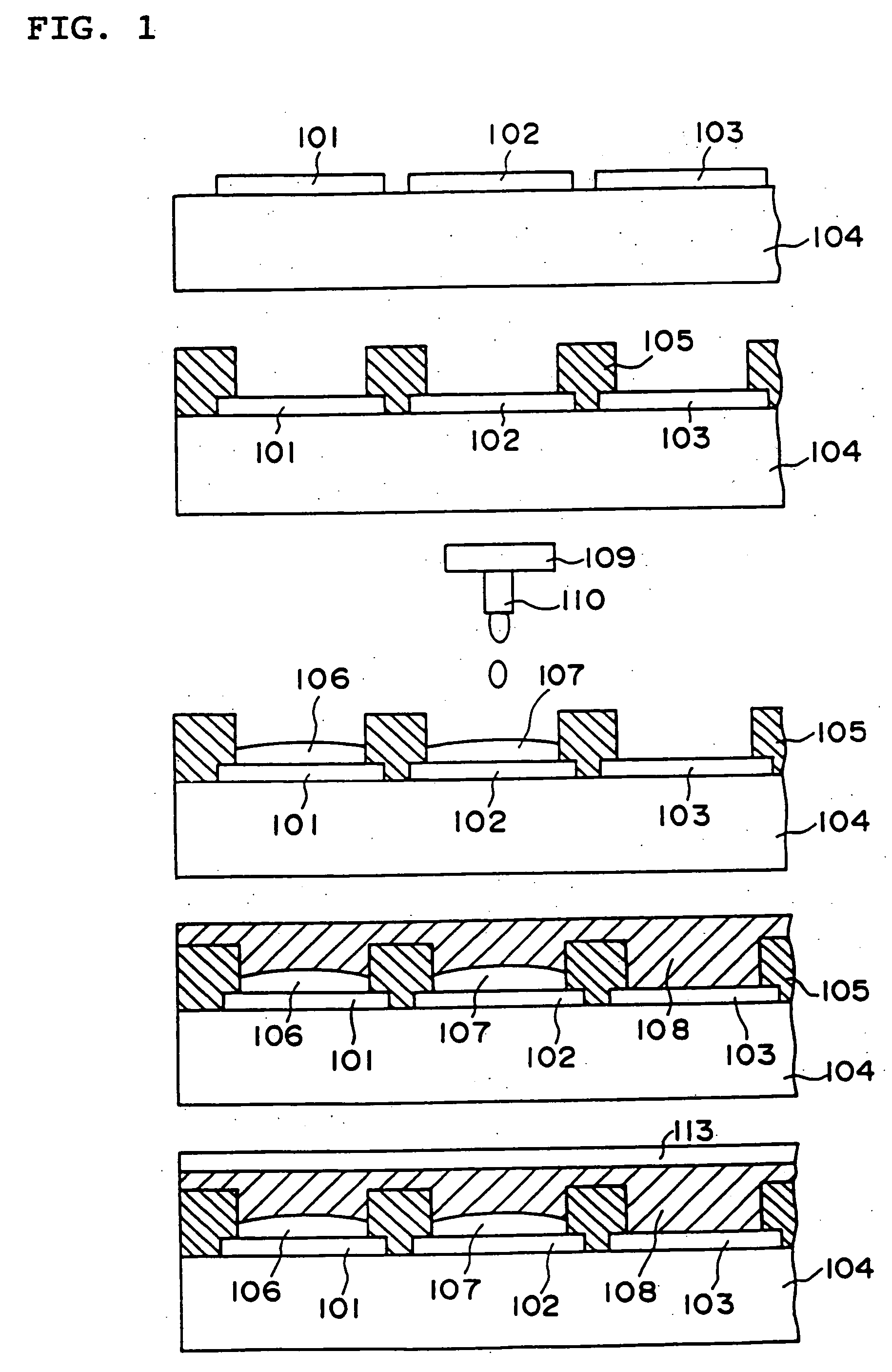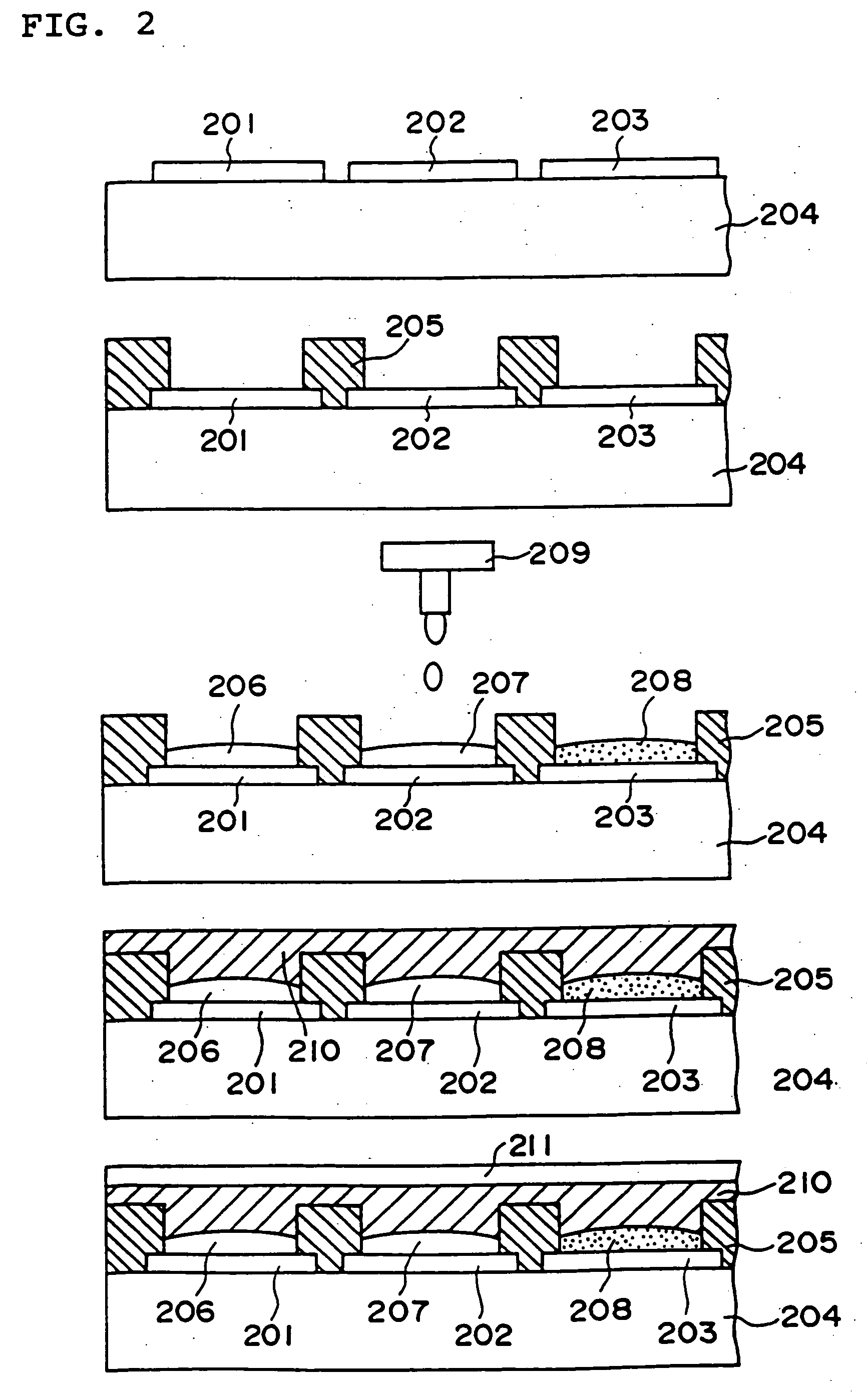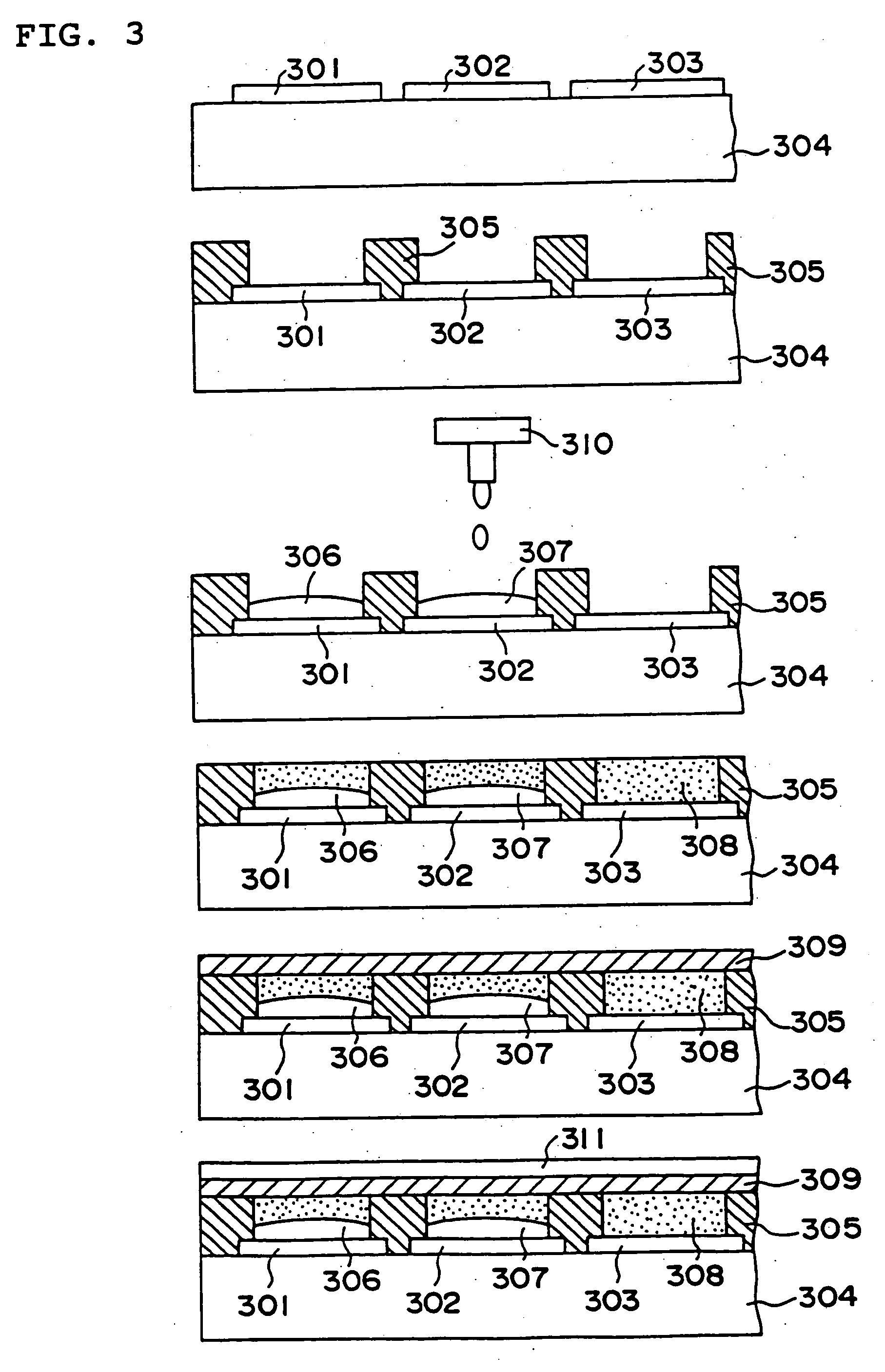Method of manufacturing organic EL element, organic EL element and organic EL display device
a technology of organic electroluminescent elements and display devices, which is applied in the direction of discharge tube luminescence screens, identification means, instruments, etc., can solve the problems of inability to say that the method is an efficient method of manufacturing elements, difficult to carry out patterning with high precision, and long time, etc., to achieve easy and precise patterning, excellent luminescence characteristics, and simple manner
- Summary
- Abstract
- Description
- Claims
- Application Information
AI Technical Summary
Benefits of technology
Problems solved by technology
Method used
Image
Examples
example 1
[0157] As shown in FIG. 1, on the glass substrate 104, ITO transparent pixel electrodes 101, 102 and 103 were formed by means of photolithography so as to form a pattern having a pitch of 100 μm and a thickness of 0.1 μm.
[0158] Then, the spaces between the ITO transparent pixel electrodes were buried, and then banks 105 which act not only as a light cut-off layer but also an ink drop preventing wall were formed by photolithography. In this case, the banks 105 were designed so as to have a width of 20 μm and a thickness of 2.0 μm.
[0159] Further, after the pattern formation with red and green luminescent materials shown in Table 1 and Table 2 which were jetted from the head 110 of the ink-jet device 109, they were undergone heat treatment under a nitrogen atmosphere for hours to polymerize the precursors in the compositions of the materials, thereby forming luminescent layers 106 (red) and 107 (green).
[0160] Then, by carrying out a vacuum deposition of aluminum quinolynol complex t...
example 2
[0162] In the same manner as Example 1, ITO transparent pixel electrodes 201, 202, 203 were formed on a glass substrate 204 as shown in FIG. 2. Thereafter, the spaces between the ITO transparent pixel electrodes were buried and then resists (partitioning walls) 205 made of a light-sensitive polyimide and functioning not only as a light cut off layer but also an ink drop preventing wall were formed.
[0163] Then, after coating and pattern formation of read and green luminescent materials shown in Table 1 and Table 2, respectively, by using an ink-jet device 209 in the same way as the Example 1, they were undergone heat treatment under a nitrogen atmosphere for four hours to polymerize the precursors in the compositions of the materials, thereby forming luminescent layers 206 (red) and 207 (green).
[0164] Next, a hole injection and transfer layer made of polyvinyl carbazole (PVK) was patterned on the transparent pixel electrode 203 by means of the ink-jet device 209. Then, a blue lumin...
example 3
[0166] First, ITO transparent pixel electrodes 801, 802 and 803 and banks 805 were formed on a glass substrate 804 as shown in FIG. 4 in the same way as Example 1.
[0167] Next, an organic hole injection and transfer type material was mixed in the luminescent materials shown in Table 1 and Table 2 to form luminescent layers 806 (red), 807 (green) and808 (blue) by using an ink-jet device 809.
[0168] Next, the vacuum deposition was carried out using the aluminum quinolynol complex to which the doping was not carried out to form an electron injection and transfer layer 811 having the thickness of 0.1 μm.
[0169] Finally, an Al—Li electrode 813 having the thickness of 0.2 μm was formed as the cathode by the deposition method, and thereby the organic EL element was manufactured.
PUM
| Property | Measurement | Unit |
|---|---|---|
| fluorescent | aaaaa | aaaaa |
| frequency | aaaaa | aaaaa |
| fluorescent | aaaaa | aaaaa |
Abstract
Description
Claims
Application Information
 Login to View More
Login to View More - R&D
- Intellectual Property
- Life Sciences
- Materials
- Tech Scout
- Unparalleled Data Quality
- Higher Quality Content
- 60% Fewer Hallucinations
Browse by: Latest US Patents, China's latest patents, Technical Efficacy Thesaurus, Application Domain, Technology Topic, Popular Technical Reports.
© 2025 PatSnap. All rights reserved.Legal|Privacy policy|Modern Slavery Act Transparency Statement|Sitemap|About US| Contact US: help@patsnap.com



